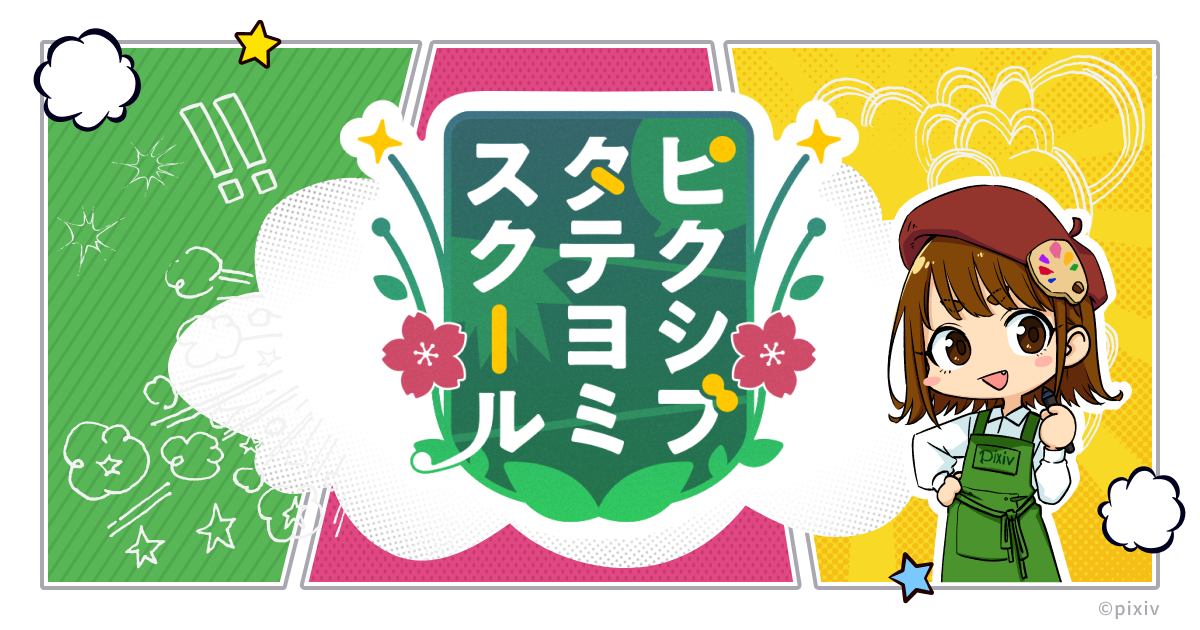縦スクの分業制作に個人の”熱”を持ち込めるか。WEBTOONレーベルPikaloが目指す「記憶に残る作品をつくる」とは?
インタビュー/ナカニシキュウ
ピクシブと、WEBTOON制作会社・LOCKER ROOM、出版社・KADOKAWAの3社により創刊されたWEBTOONレーベル「Pikalo」(ピカロ)。記念すべき第一作目の『ねえ、忘れていいよ。』は8月末より配信がはじまり、今後も新タイトルがリリースされる予定です。
新たなレーベルをはじめた理由、そしてクリエイターにとってのPikaloの魅力を、Pikalo編集部の朝岡優太さん、藤本七愛美さんにお聞きしました。作家さん個人の熱量を重視し、記憶に残る作品を生み出そうとする姿勢に迫ります。

記録よりも記憶に残る作品を
── Pikaloは、朝岡さんが代表を務めるWEBTOON制作会社・LOCKER ROOMと、ピクシブ、KADOKAWAの3社による協業で生まれたレーベルということですが、どういった経緯で発足したんですか?
──LOCKER ROOMとピクシブの間で意気投合したポイントというのは?
朝岡:WEBTOONだろうが版面マンガだろうが、ドラマでもアニメでもなんでもそうなんですけど、「作り手が面白がって作らなければ文化になっていかない」というところですね。要は、すでに人気のジャンルや作品傾向に合わせて数字の取れる作品ばかりを作っていても、商売にはなったとしても文化としては根付いていかないだろうと。これはもちろん、KADOKAWAさんとも見解が一致したところです。
「誰かのスキの生みの親」がPikaloのキャッチコピー。
──「WEBTOONを文化として日本に根付かせる」という明確な旗印の元に立ち上がったレーベルなんですね。
朝岡:そうですね。業界においてユニークなポジションでいることはけっこう強く意識していて、「記録よりも記憶に残る作品を作る」「作家が憧れる作品を作る」「ほかがやっていないことをする」という3つのポリシーを打ち出しています。まず「記憶に残る作品」とはどういうことかというと、たとえば何か作品がひとつあったとして、それがどうなったら“敗北”なのかを考えたときに、僕らとしては”売れない“よりも”埋もれてしまう“ほうが敗北だと考えているんです。WEBTOONの場合はとくに「読んでるときは楽しかったけど、あとから考えたら何も覚えていない」というような作品も多いと思っていて。
──なるほど。
──作品が載るなら憧れの媒体がいいと思うのは当然ですもんね。
WEBTOONの書籍化については、Pikaloのnoteにて、KADOKAWAの担当者さんが思いを綴られています。
── 自作が紙の本になるのはやっぱり嬉しいし、達成感もありますよね。3社の強みを生かすことで、それが可能になると。
──レーベルとしては、BLなどの女性向けジャンルに注力していく方針だと聞いていますが。
朝岡:もともとはそのつもりだったんですが、最近はそこに執着しなくてもいいかなと思い始めています。仮にギャグマンガが最初に当たったらギャグ作品が増えていくでしょうし、結局は最初に何が当たるか次第だと思うんですよ。今は割合でいうと女性向けが8割、男性向けが2割ぐらいなんですが、女性向けの作品であっても男性が読んでも面白いように作っていますし、逆もしかりです。割合もこれから変わっていくと思います。
──もともと女性向けに特化しようと思っていたのは、ほかとの差別化という意味合いが強かったのでしょうか?
朝岡:いや、差別化というよりは、単純にうちのスタッフに女性が多いからというのが大きいですね。最初にお話ししたように「作る側が楽しまないといけない」という基本姿勢がありますので、彼女たちがより体重を乗せて作れるのはやはり女性向けジャンルだろうと。それに加えて、新しいメディアのユーザーは女性が多いものなので……たとえばTikTokの縦長動画なんかもそうですよね。なのでそこをターゲットにしたほうがいいだろうと思ってのことだったんですが、ここ1年くらいでだいぶ状況も変わってきまして。今はそこまでパキッと分けなくてもいいかなと考えています。
Pikalo編集部の紹介note。編集者も増員しつつ、新たなヒット作を目指します。
大事なのは熱が乗っているかどうか
── Pikaloの人材募集は「個人クリエイター」と「分業クリエイター」に窓口が分かれていて、どちらにも応募できるようになっているのが非常にユニークですよね。
──週間でフルカラーの作業量を考えるとそうですよね……。『ねえ、忘れていいよ。』はどんな着想から生まれた作品なんですか?

──ネーム以降を作家さんにお願いしたあと、たとえば「ここのセリフを変えたい」とか「こういう作画演出を思いついた」みたいな声が上がってきたりはするんですか?
『ねえ、忘れていいよ。』2話より
──現在クリエイターとしてPikaloに所属している方は、個人作家さんと分業スタッフさんの割合でいうとどんな感じなんですか?
──「本当はもっと個人の方に来てほしいな」とかはありますか?
──たとえば「線画までを個人でやって、着彩以降を分業で」みたいな形もあり得るわけですよね?
藤本:あり得ますが、それだと結局分業型でやるのと同じことになっちゃうかなあとも思っていて。
Pikalo参加クリエイターの声
──実際にPikaloに参加されたクリエイターの声を聞くべく、『ねえ、忘れていいよ。』の作家さんおふたりに質問をしました。
仕上げご担当:永世(ながせ) 先生
『ねぇ、忘れていいよ。』の仕上げ担当。本作が初の商業作品。Xアカウントhttps://x.com/naga7992
Q1. Pikalo参加のきっかけは?
A. もともとWEBTOON作品を読むことと、絵を描くことが好きで、好きなことをお仕事にできないかといろいろ調べていました。そんな時に、たまたま流れてきたPikaloさんの作家募集の広告に惹かれ、応募しました。
Q2. 参加してみての感想は?
A. 初めてのWEBTOONのお仕事なので、他と比べることはできませんが、仕上げの際の目指すべき雰囲気をイメージしやすいと感じています。お仕事をいただいた最初に、こういう雰囲気の作品にしたい、〇〇の感じを大切にしたい、という作品の方向性について深く共有していただきました。そのおかげで仕上げ作業の道しるべができ、迷った時にはかなり助けられています。
Q3. 『ねぇ、忘れていいよ。』のお気に入りのシーンは?
A. 個人的には文化祭のお話がお気に入りです。お化け屋敷で怖がっている希人くんを一樹くんが引っ張ってあげたり、後夜祭ライブをしたり、2人が思いっきり青春してキラキラしているので読んでいてとても楽しかったです。文化祭を満喫している2人につられて、私自身も仕上げをしている時に楽しい気持ちになりました。
仕事は楽しくなかったら嫌じゃないですか
── 元のインタビューに戻ります。Pikaloに応募した人が実際に作品を担当するまでは、どういう流れになるのでしょうか。
藤本:分業と個人でちょっとルートが違ってくるんですが、分業の場合はご応募いただく際にポートフォリオを送っていただくようにしています。それを元に技術レベルやジャンル適性を判断して、そのとき動いているプロジェクトに空きがあればお声がけしていく。正式依頼の前にトライアルとして1話の半分くらいの作業量をやっていただいて、そこで作品との相性を確かめる感じですね。こちら側の視点からだけじゃなくて、その方自身の「この系統の作品はあまりやりたくない」というのもあると思いますので。そこで双方の合意が取れれば正式依頼に進みます。
──なるほど。「こういう作品を担当したいです」みたいな希望もちゃんと聞いてもらえるんですね。
──たしかに、好きだけど向いていないものをやるよりも、好きではないけど向いているものをやったほうが結果的に幸せな場合もありますもんね。
── 個人作家さんの場合はどうですか?
個人クリエイターの制作の流れ
── 従来の雑誌持ち込みとほぼ同じような流れですね。
── 昨今ではWEBTOONスタジオがあちこちにできていて、描き手を目指す方の選択肢が増えていると思います。その中で、よそではなくPikaloで描くメリットは何ですか?

準備中の新作より。くたびれた中年刑事が不思議な少女とタッグを組む意欲作。
── なるほど。個人作家さんはもちろんですけど、分業でやりたい人にとってもそれは大きなアドバンテージかもしれないですね。やはり「分業=売れ筋のジャンル」みたいなイメージは強いと思いますし。
朝岡:そうですね。しつこいようですけど、描く人の筆が乗ってないと、記憶に残る作品にはならないんですよ。まあ、筆が乗ってなくても売れるときは売れるんですけど(笑)、とはいえ仕事はやっぱり楽しくなかったら嫌じゃないですか。
── 楽しく仕事したほうがよりクリエイティビティが発揮されるのは間違いないですしね。
── そのアニメ会社にちゃんとロボット好きが集まるようにするには、会社のイメージが確立される必要がありますよね。
朝岡さんが書かれたnoteには、「記憶に残るものを作る」「短期でうまくいかなくても打席に立ち続ける」といった言葉が綴られています。
── あれですよね、サンライズにとっての『機動戦士ガンダム』みたいな。
朝岡:そうそうそう。ガンダムが当たったからサンライズにはそのイメージがついたけど、もし別の作品がヒットしていたら、まったく違うイメージの会社になってたかもしれないっていう。Pikaloにとってのそれがどんなジャンルの作品であっても僕はうれしいです。それこそBLでもいいし、ギャグでもスポーツでもなんでもよくて。
── その結果、「サンライズでアニメを作りたい」という人がいるように、「Pikaloで描きたい」という人が集まるのが理想であると。
シンボリックなタイトルを作らなければいけない
── 業界全体としても、Pikaloのようなスタンスのレーベルやスタジオがもっと出てきて、スタンダードになっていくといいですよね。
朝岡:そうなったほうがいいとは思っています。だって今売れているWEBTOON作品ってロマンスファンタジーとか俺TUEEE系とかが多くて、「それ、アニメ化したときにグッズ売れます? 二次創作したくなります?」と思ってしまいます。作品をグローバルに広げていくときにキャラクタービジネスが成立するかどうかってすごく重要で、それはつまりそのキャラクターが人の心に残るかどうかってことなんですよね。
── たしかに、現状のWEBTOONにあまりIP化のイメージはないですね。
朝岡:『ONE PIECE』をタテで読みたい人はいないし、タテである必要もあんまりないですから。「スマホでサクッと楽しめる」的な文脈とIP化の文脈って、両立がすごく難しいんです。でも、国産のWEBTOONを北米やヨーロッパ、アジアへ広げていくためには、日本生まれのシンボリックなタイトルを作らなければいけない。アニメやドラマ、ゲームなどまで広がる作品を、ここから5年10年の間に生み出さないと、「べつにヨコのマンガでええやん」となってしまう。WEBTOONならではのシンボリックな作品を作って、それによって市場を大きくしていくことが、僕らの抱えているミッションだと思ってます。

準備中の新作より。異世界転生したアイドルオタクがプロデューサーとなり、個性豊かな魔族のメンバーとアイドルユニットをはじめる。
── 逆に言うと、“WEBTOONならではの性質を備えながら、IP化にも耐えうる作品”が必ずできるはずだという確信があるわけですよね。
── 実際問題として、“ヨコのマンガにできてタテではできないこと”って何かあると思いますか?
── ただ、それはあくまで演出面のお話ですよね。作品そのものが成立するかどうかでいうとどうですか?

── ですよね。だからこそ、今まで誰もが「タテではできない」と思っていたようなジャンルでヒット作を生んでもらえたらうれしいなと。
PikaloではWEBTOONクリエイターを募集中!!
pixiv、KADOKAWA、LOCKER ROOMによるWEBTOON出版・制作レーベルPikalo(ピカロ)では、WEBTOONクリエイターを大募集中です!!
ゼロからひとりで作品を作り上げたい個人クリエイターも、
得意な工程だけを担当したい分業希望のクリエイターも、
どちらでも応募いただけます。
Pikakoのnoteでは、制作に携わるメンバーが思いの丈を綴っています。








ネームご担当:轍(わだち) 先生
新米のWEBTOON作家。『ねぇ、忘れていいよ。』のネーム担当。本作が初の商業作品。
Q1. Pikalo参加のきっかけは?
A. 趣味の絵を仕事に活かしたいな~と考えていた際にWEBTOONの分業形式を知り、制作会社であるLOCKER ROOMさんにネーム作家として応募させていただいたのがはじまりでした。そこから「WEBTOONのBL作品を作りませんか?」とお声がけがあり、元々BLが好きだった自分は「これは天啓だ……!!」と感じて即座にPikaloさんに参加させていただきました。
Q2. 参加してみての感想は?
A. 横読みマンガの形式にとらわれず読んだり描いたりできるWEBTOONなのですが、Pikaloさんでは尚の事、自由にネームを制作させていただきました(笑)。「こういう演出は面白いんじゃないか?」というアイデアをどんどん盛り込んでいます。あとはこれは自分が好きだからという理由もあるのですが、Pikaloさんが女性向けジャンル中心に作品を制作されていることが、「自分も読みたい! 描きたい!」という意欲向上に繋がっています。
Q3. 『ねぇ、忘れていいよ。』のお気に入りのシーンは?
A. 主人公ふたりがちょっとしたすれ違いから気まずくなってしまい、それから……という展開があるのですが、見ているこちら側が眩しくなってしまう位の青春ストーリーなので、ぜひこのエモさを感じでいただきたいです……! 他にも、タテだからこそ映えるコマ演出なども節々に取り入れてみたので、そんな部分も見ていただければ幸いです。